第22章
We made many excursions down the Iritiri, and saw much of these creeks; besides, our second visit to the mills was by water.The Magoary is a magnificent channel; the different branches form quite a labyrinth, and the land is everywhere of little elevation.All these smaller rivers, throughout the Para Estuary, are of the nature of creeks.The land is so level, that the short local rivers have no sources and downward currents like rivers as we generally understand them.They serve the purpose of draining the land, but instead of having a constant current one way, they have a regular ebb and flow with the tide.The natives call them, in the Tupi language, Igarapes, or canoe-paths.The igarapes and furos or channels, which are infinite in number in this great river delta, are characteristic of the country.The land is everywhere covered with impenetrable forests; the houses and villages are all on the waterside, and nearly all communication is by water.This semi-aquatic life of the people is one of the most interesting features of the country.For short excursions, and for fishing in still waters, a small boat, called montaria, is universally used.It is made of five planks; a broad one for the bottom, bent into the proper shape by the action of heat, two narrow ones for the sides, and two small triangular pieces for stem and stern.It has no rudder; the paddle serves for both steering and propelling.The montaria takes here the place of the horse, mule, or camel of other regions.Besides one or more montarias, almost every family has a larger canoe, called igarite.This is fitted with two masts, a rudder, and keel, and has an arched awning or cabin near the stern, made of a framework of tough lianas thatched with palm leaves.In the igarite they will cross stormy rivers fifteen or twenty miles broad.The natives are all boat-builders.It is often remarked, by white residents, that an Indian is a carpenter and shipwright by intuition.It is astonishing to see in what crazy vessels these people will risk themselves.I have seen Indians cross rivers in a leaky montaria, when it required the nicest equilibrium to keep the leak just above water; a movement of a hair's breadth would send all to the bottom, but they managed to cross in safety.They are especially careful when they have strangers under their charge, and it is the custom of Brazilian and Portuguese travellers to leave the whole management to them.When they are alone they are more reckless, and often have to swim for their lives.If a squall overtakes them as they are crossing in a heavily-laden canoe, they all jump overboard and swim about until the heavy sea subsides, then they re-embark.
A few words on the aboriginal population of the Para estuary will not be out of place here.The banks of the Para were originally inhabited by a number of distinct tribes, who, in their habits, resembled very much the natives of the sea-coast from Maranham to Bahia.It is related that one large tribe, the Tupinambas, migrated from Pernambuco to the Amazons.One fact seems to be well-established, namely, that all the coast tribes were far more advanced in civilisation, and milder in their manners, than the savages who inhabited the interior lands of Brazil.They were settled in villages, and addicted to agriculture.They navigated the rivers in large canoes, called ubas, made of immense hollowed-out tree trunks; in these they used to go on war expeditions, carrying in the prows their trophies and calabash rattles, whose clatter was meant to intimidate their enemies.
They were gentle in disposition, and received the early Portuguese settlers with great friendliness.The inland savages, on the other hand, led a wandering life, as they do at the present time, only coming down occasionally to rob the plantations of the coast tribes, who always entertained the greatest enmity towards them.
The original Indian tribes of the district are now either civilised, or have amalgamated with the white and negro immigrants.Their distinguishing tribal names have long been forgotten, and the race bears now the general appellation of Tapuyo, which seems to have been one of the names of the ancient Tupinambas.The Indians of the interior, still remaining in the savage state, are called by the Brazilians Indios, or Gentios (Heathens).All the semi-civilised Tapuyos of the villages, and in fact the inhabitants of retired places generally, speak the Lingoa geral, a language adapted by the Jesuit missionaries from the original idiom of the Tupinambas.The language of the Guaranis, a nation living on the banks of the Paraguay, is a dialect of it, and hence it is called by philologists the Tupi-Guarani language; printed grammars of it are always on sale at the shops of the Para booksellers.The fact of one language having been spoken over so wide an extent of country as that from the Amazons to Paraguay, is quite an isolated one in this country, and points to considerable migrations of the Indian tribes in former times.At present the languages spoken by neighbouring tribes on the banks of the interior rivers are totally distinct; on the Jurua, even scattered hordes belonging to the same tribe are not able to understand each other.